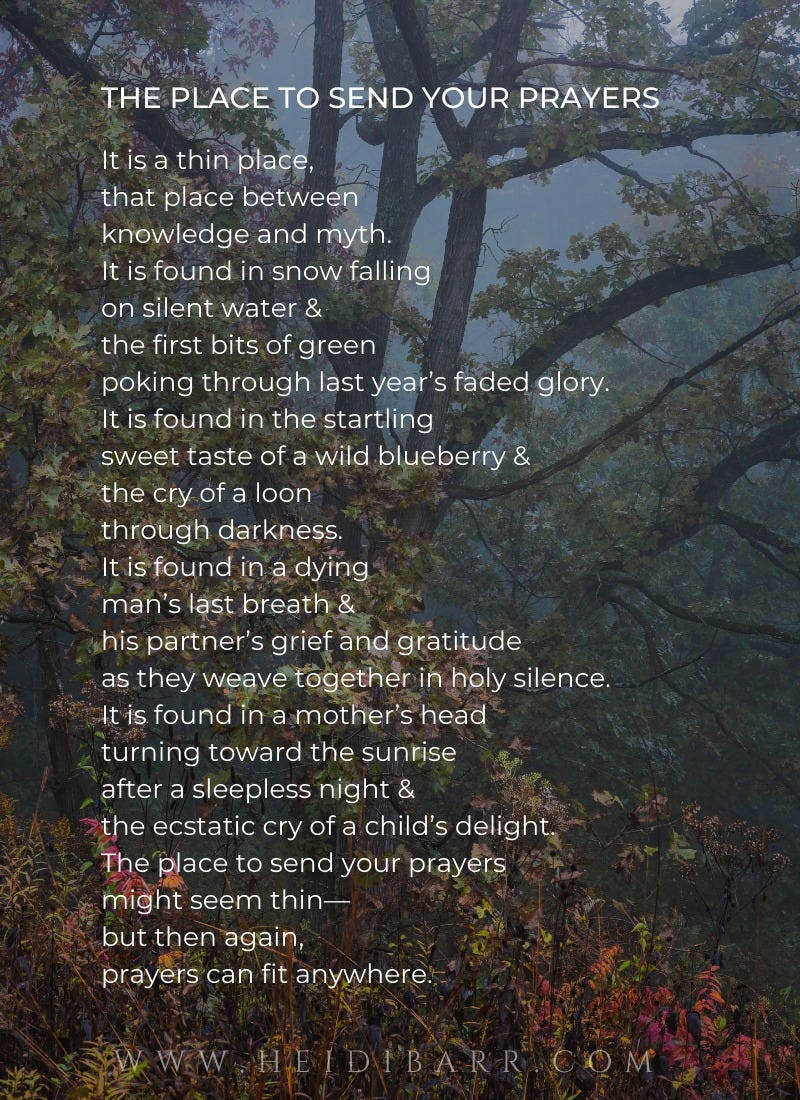Spring is just around the corner — the vernal equinox is later this week, and though we know with it comes a brief period of balance in terms of light and dark, we never know the details of what is coming next. We can have a general idea of how we want things to unfold, or even a plan on how to set ourselves up for success with meeting our goals. Flowers might emerge just to be nipped by late spring storm. The seeds we plant may not germinate properly. Illness or natural disaster or unwanted job change might disrupt the momentum of moving toward what we want. But despite the uncertainty, the choice in how we respond to what unfolds is ours. There is plenty of destruction that comes with a late spring storm. What if beauty could be found alongside the snow, too?
Many of the folks in [addiction] recovery with whom I interact with these days are in a place that’s a little like the days of early spring: they’re working toward balance, but sometimes the changes that are necessary to lead there feel just a little out of reach. The sustainable path forward is unclear. Muddy. Then icy. New rocks get uncovered with the each thaw. Then it’s muddy again. The path dries out, but then another storm comes leaving new obstacles. And so on. They have an idea of what needs to happen to help them stay sober, but there’s a lot of uncertainty about how things will go once they return to their regular routines. A lot has to shift to support a newly substance-free lifestyle, especially after years of active addiction. Spring, especially in locations such as Minnesota, is a messy and unpredictable season. So is early recovery. There’s a light at the end of the transition, but it’s often an uncomfortable, muddy, rocky road toward it.
And even as a person in recovery looks toward the future with hope and anticipation, there is grief involved, too. The methods used to cope with stress, the escape from reality, the people associated with using, the person (even when they didn’t like ‘em) they were in active addiction…letting those things go, those aspects of addiction that got wrapped up in identity—even though they were more harmful than anything else— can feel like a loss. Any change, even the ones that are ultimately positive, can require a bit of time for grief, for acknowledging a passing.
Many of those same folks who need a bit of time to grieve [certain aspects of active addiction] are also seeking a greater connection to themselves, to others, and to their place in the world. They’re looking to repair their relationships, and to do that they’re exploring what it means to connect (or reconnect) to their spirituality. This may mean via organized religion, or nature time, or meditation, or cultural rituals or ceremonies or whatever else leads to that sense of connection to something greater than themselves. However they get there, seeking s spiritual center means moving toward making their connection to a higher power part of everyday life.
Today is St. Patrick’s Day. I’m not Irish, but I appreciate many aspects of Celtic theology, especially the notion of a “thin place” — a place where God’s presence feels more palpable. A space where experiencing the ordinary as holy is more accessible, the layer between human and divine nearly nonexistent. So, on St. Patrick's day, here’s a poem about thin places, from Cold Spring Hallelujah. Whether you have just stepped into active recovery, have been sober for 50 years, or have never suffered from the disease of addiction, may you always remember that your prayers can fit anywhere.







I’m not Irish either but I have loved the idea of ‘thin places’ for a long time.
Love this beautiful poem too.
I know a few people who are in recovery. They also work with others who are actively struggling and working on their recovery. They will find value in this post.
Thank you.
Thank you for these beautiful words!